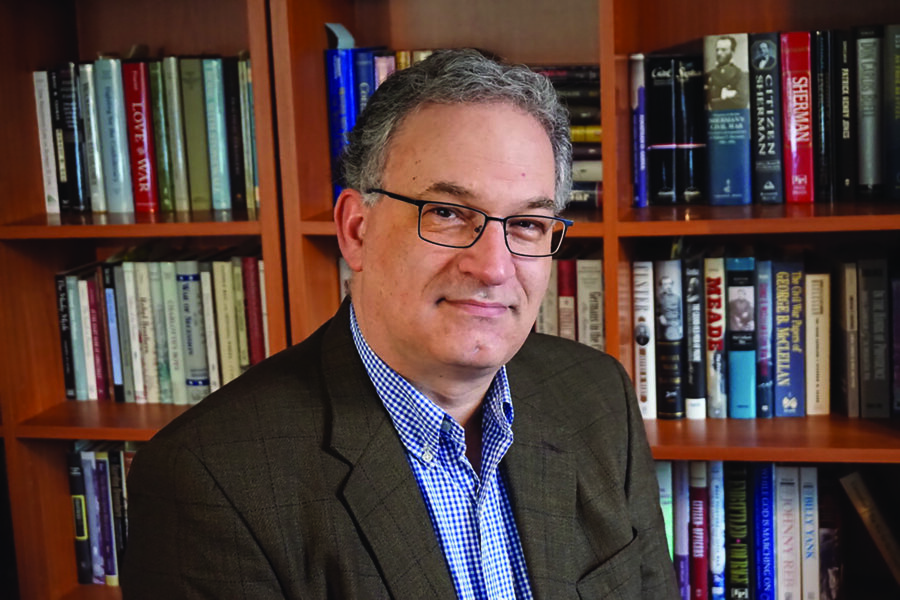African Americans, Death, and the New Birth of Freedom: Dying Free During the Civil War and Reconstruction by Ashley Towle. Lexington Books, 2022. Cloth, ISBN: 978-1666905717. $95.00.
 With this book, Ashley Towe makes an important contribution to African American history during the Civil War era. Towle reveals the ways in which death provided African Americans with a means for cultivating a culture of racial justice as they combated inequality. In so doing, she highlights the human agency African Americans asserted in the context of both the experience of mourning and post-emancipation racial violence.
With this book, Ashley Towe makes an important contribution to African American history during the Civil War era. Towle reveals the ways in which death provided African Americans with a means for cultivating a culture of racial justice as they combated inequality. In so doing, she highlights the human agency African Americans asserted in the context of both the experience of mourning and post-emancipation racial violence.
Some of the most innovative scholarship in Towe’s book is her study of cemeteries, which is the focus of the first two chapters. In chapter 1, she examines how African American cemeteries and funerals became sites of community-building and autonomy. But cemeteries also became spaces for political action. For example, Towe explores in depth the establishment of Randolph Cemetery in South Carolina. Named for slain state senator Benjamin F. Randolph, the cemetery became a place for African Americans to demonstrate their support for his politics and create “counter-historical landscapes to Confederate cemeteries” (28).
In chapter 2, Towe outlines in great detail the efforts African Americans made to bury Union soldiers in national cemeteries to ensure their proper place in the landscape of American memory. This included exhuming and reinterning dead African Americans, maintaining graves, and building national cemeteries in southern states. While the U.S. Army made every effort to bury black and white Union soldiers separately, African Americans worked against this segregationist position. At Arlington National Cemetery, Towe highlights how African Americans leaders unsuccessfully “protested” the policy of segregation. The failure of their efforts reveals the discontinuity between the vision of the Black soldiers from the perspective of the federal government and that of the African American leadership, who wanted a more heroic image of the fallen Black soldier. But Chalmette National Cemetery in New Orleans is presented as a stark contrast, where the bodies of Black soldiers were exhumed and reburied to a separate freedmen’s cemetery. Despite these discriminatory efforts, Towe relays how African Americans employed Decoration Days to descend upon national cemeteries and declare their understanding of the meaning of the Civil War, connecting the war to their freedom and political aspirations. White southerners, not surprisingly, reacted with hostility towards these public celebrations.
In the second half of the book, Towle shifts focus to explore the ways in which death during the Civil War and its aftermath shaped the experience of widowhood for African American women and African American religion. The money owed to families of fallen African American soldiers, Towle maintains, provided opportunities for economic independence. The sacrifices made for the nation by their husbands, widows claimed time and again, meant that they were owed money from the federal government. Freed people also proclaimed that federally held land should be made theirs—and in this way demonstrated that freed people understood that they could make arguments to the federal government that the government provide for them as recompense for the sacrifice of African American soldiers. To support her argument, Towle examines the pension applications of women like Adele Anderson who, even though she had a romantic relationship with another man, explained in her appeal that she too, like her husband, participated in the Union cause as a nurse and cook. For Towle, this illustrates how African American women articulated “their own definitions of freedom, family, and respectability” (93). Meanwhile, churches became spaces where African Americans were able to assert their autonomy and link death with their claims for equality. Towle shows the ways in which African Americans incorporated the African spiritual belief of Conjure into their churches. Through this practice, numerous African Americans sought to connect to the spirits of deceased African American soldiers as solace for them during the challenges of Reconstruction.
In her final and perhaps most powerful chapter, Towle examines how African Americans testified about violent deaths of Blacks they witnessed at the hands of whites during Reconstruction. The efforts African Americans made to speak out, despite the hurdles they faced in doing so, provide testament to the lengths they went to resist the racial society they lived in and demand equality. Ultimately, the newly freed people were insisting on social justice in a world that continued to act without justice towards them.
Despite the thorough research conducted by Towle, her writing tends to be overly repetitive. This critique notwithstanding, her book is an essential read for anyone interested in African American history during the Civil War and Reconstruction.
Daniel Kotzin is professor of history and chair of the Department of History at William Jewell College.
